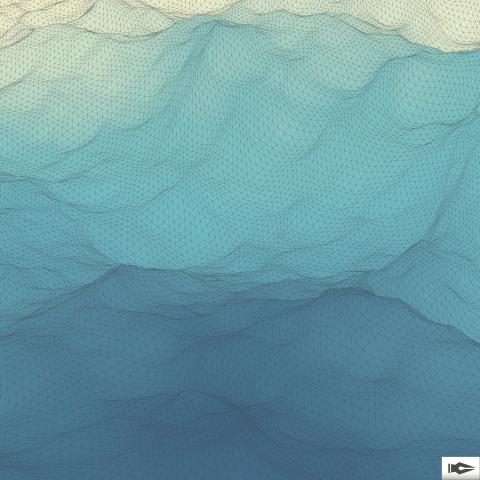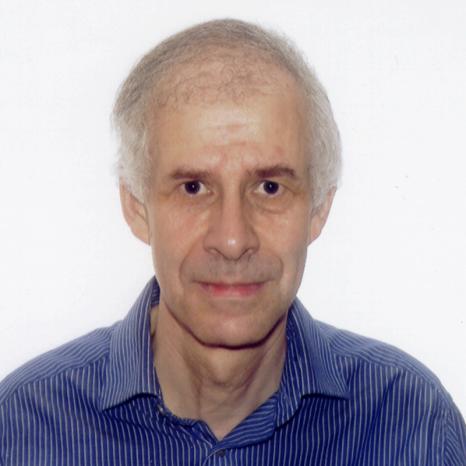
Yann Brenier enriches mathematics with insights from fluid mechanics
Yann Brenier is a professor and researcher at the Orsay Mathematics Laboratory (LMO - Univ. Paris-Saclay, CNRS). His impressive career path and uncanny intuition reveal a mathematical researcher inspired by fluid mechanics, as humble as he is passionate.
After taking a scientific baccalaureate in 1973 at the age of 16, Yann Brenier studied applied mathematics at Université Pierre et Marie Curie (UPMC, now Sorbonne Univ.). "By the second year, I supplemented my studies by teaching myself, and that's when I developed my passion for mathematics." In 1977, he continued his studies at the École Nationale des Ponts et Chaussées (now the École des Ponts ParisTech), where he studied physics applied to engineering. During this time, Yann Brenier conducted a research internship at the EDF national hydraulic laboratory, where he worked on the numerical visualisation of fluid flows. At the same time, he completed a DEA (now equivalent to a 2nd year Master's) in numerical analysis at the UPMC and completed his internship at the IRIA (now Inria) on the subject of fluid mechanics in porous media.
The invention of the transport-collapse theory
In 1979 - aged 22 - Yann Brenier applied to the IRIA as a researcher to start a postgraduate thesis, which he defended in 1982. The PhD thesis examined the adaptation of a numerical model of reaction-diffusion (used in chemistry and biology) to non-linear hyperbolic partial differential equations, used to model shock wave propagation phenomena. "To my surprise, this transposition worked out nicely!" This discovery prompted Yann Brenier to devise a new theory, which he called ‘Transport-écroulement’ (Transport-collapse). It enjoyed rapid success and preceded the more advanced theory of the kinetic formulation of scalar conservation laws. The researcher continued this work until he obtained his National Thesis (now an Accreditation to Supervise Research or HDR in French) in 1986. "This was the first rigorous result obtained in this field, so I was quickly recognised for this breakthrough."
In 1984, Yann Brenier did his national service in 'cooperation' at the National Autonomous University of Mexico. There he met a professor in numerical analysis at the University of California (UCLA), who offered him a collaboration at Los Angeles. "This period was a fantastic experience, and gave me a taste for college life, especially at a university that was in full expansion at the time."
A scientific turning point: optimal transport
Having returned to France in 1986, as Director of Research at Inria, Yann Brenier was involved in a project conducted in collaboration with the military department of the CEA (French Alternative Energies and Atomic Energy Commission). The aim was to produce a three-dimensional numerical simulation of tsunamis near the coast. A few years earlier, in 1983, following the nuclear tests at Mururoa, the atoll was submerged by a tsunami, and the research organisation wanted to better understand the mechanics of tsunamis. "This problem gave me inspiration for a new research theme. I had the idea, unusual in computational fluid dynamics, of discretising the ocean into pixels and studying the motion of the fluid by interchanging these pixels." Yann Brenier reprised the combinative aspect of his Transport-collapse theory, and found inspiration in the work of the mathematician Vladimir Arnold on the interpretation of the movement of incompressible fluids from a geometrical perspective. "This is an abstract vision of fluid mechanics. By interchanging the pixels, I made a discreet version."
Understanding this algorithm has played a key role in Yann Brenier's career. By reformulating it in terms of Monge's optimal transport theory (the study of the optimal transfer of materials and the optimal allocation of resources developed in 1780 by Gaspard Monge), reformulated by Leonid Kantorovich into a linear programme in 1942, Yann Brenier helped take this theory out of its usual framework (econometrics, combinatorial optimisation, and statistics). "I guessed that there was a connection between the optimal transport method and the partial differential equations - which are ubiquitous in physics and fluid mechanics - especially the Euler and Monge-Ampere equations."
Yann Brenier published the results in 1987, and it was picked up by renowned mathematicians at the Courant Institute in New York. Since then, the optimal transport theory has enjoyed resounding success. For example, Cédric Villani and Alessio Figalli were each awarded a Fields Medal for their work on this subject, and the current applications pertain to artificial intelligence and statistics. Between 1989 and 1999, Yann Brenier made another contribution to the theory, among other things by extending it to the Euler equations for incompressible fluids. This work earned him the ‘Grand Prix Ampère de l'électricité de France’ (Grand Prix Ampère for electricity in France) from the French Academy of Sciences in 2022, and numerous invitations to conferences, including the International Congress of Mathematics and the International Congress on Industrial and Applied Mathematics.
From the ENS to Université Paris-Saclay, via Nice and the École Polytechnique
From 1990 to 1997, Yann Brenier returned to the UPMC as a professor, with an assignment at the École normale supérieure (ENS), to represent the vision of applied mathematics of the Laboratoire d'analyse numérique (Numerical Analysis Laboratory) of the university (now Jacques Louis-Lions Laboratory).
From 1997 to 2009, he worked at Université de Nice (now Université Côte-d'Azur) as a CNRS Director of Research. There he set up and piloted the Wolfgang Döblin Research Federation (FWD), which brings together the Institut non-linéaire de Nice (Non-linear Institute of Nice, INLN), the Jean-Alexandre Dieudonné Laboratory (LJAD), and the Cassini Laboratory of the Côte d'Azur Observatory. Yann Brenier's scientific interaction with the latter was crucial: Monge's problem was related to the modelling of the early universe (300,000 years after the Big Bang), and a fruitful theoretical collaboration was born. "I think this is one of the nicest applications of optimal transport to the natural sciences." During this period, Yann Brenier also continued his work on the theory of non-linear hyperbolic conservation laws, to generalise the concept of optimal transport to currents.
From 2008 to 2012, he was President of the mathematics section of the national committee of the CNRS. And from 2012 to 2018, he joined the Laurent Schwartz Centre for Mathematics at the École Polytechnique. At the same time, he was involved in the work on optimal transport by the CNRS-Inria Mokaplan team. From 2018 to 2020, he returned to the ENS and mentored five students.
In 2022, he was recruited at the Orsay Mathematics Laboratory (LMO - Univ. Paris-Saclay, CNRS), where he is reformulating Einstein's equations in a vacuum as an optimal transport problem. "It is much too early to know if this approach will prove successful. But my intuition, which has often turned out to be accurate (even if I also had some less good ideas!), gives me hope that it is worthwhile pursuing this area.". Yann Brenier, now almost 67 years old, will likely continue his mission as professor and Emeritus Director of Research.

